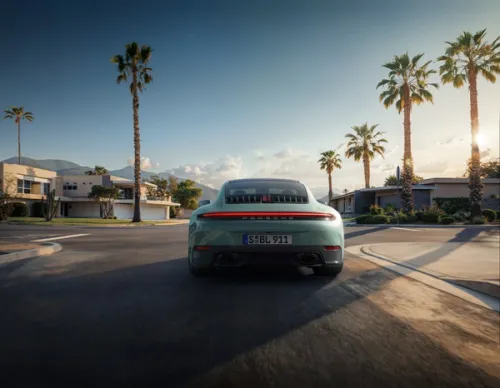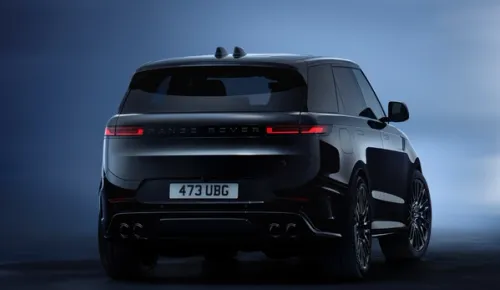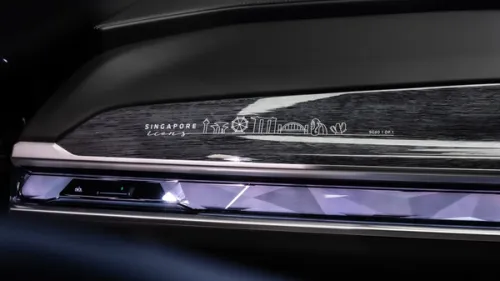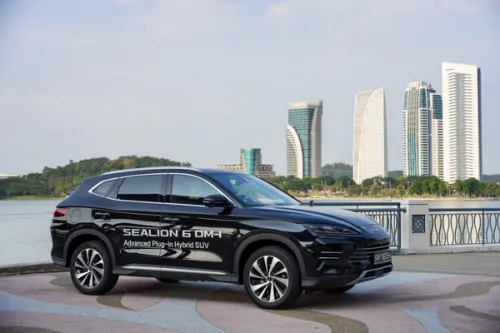Fancy A Tank On A Road? Get the Audi A8 L Security
The long-wheelbase high-security version of the A8 meets the strictest guidelines in force for civilian vehicles, with a host of special security features available in addition to its heavy armoring.


Audi is introducing a new, exclusive model – the A8 L Security. The long-wheelbase high-security version of the A8 meets the strictest guidelines in force for civilian vehicles, with a host of special security features available in addition to its heavy armoring. At sales launch Audi will offer the W12 engine, with another unit to follow in 2012. Both engines combine superior power with high efficiency.
At 5.27 meters (17.29 ft) in length, the Audi A8 L Security is a large, representative luxury sedan, hardly distinguishable to the eye from the production version. The LED headlights, which use light-emitting diodes for all functions, lend a striking expression to its front. They are part of the standard package in the A8 L Security W12.
When developing the basic design for the A8 model line, Audi engineers already had the high-security version in mind from the very outset. The result is a totally integrated concept far superior to any retrofit solution currently available on the market. All of the major components were analyzed with regard to their deformation properties, giving the A8 L Security an excellent crash performance that is also mindful of the other party involved.
The armored sedan’s custom security modifications are performed by hand in a small, well-guarded workshop – on a production floor with specially secured doors, where the use of cellular phones is strictly prohibited. The basis for the high-security car is a previously modified aluminum production body constructed at the Neckarsulm plant as per the Audi Space Frame (ASF) principle. Specially trained technicians put in roughly 450 hours of work to incorporate the security features – in the uncompromisingly high quality Audi is known for. When this stage of the process is complete, the car returns to the factory for final assembly.
The A8 L Security has been officially certified by a German-government ballistics testing facility in Munich for compliance with the class VR 7 ballistic protection standard (tested as per BRV 2009 guidelines). The abbreviation BRV stands for Bullet Resistant Vehicles. The car’s resistance to explosions was tested as per ERV 2010 guidelines (ERV = Explosion Resistant Vehicles). Class VR 7 ballistic protection imposes the strictest standards on civilian high-security sedans. The sheet metal and glazing in the passenger cell must withstand firing with NATO hard-core ammunition. In certain areas, the armoring on the Audi A8 L Security even complies with the criteria for class VR 9 and VR 10.
Integrated as a unitized component of the body, the high-security sedan’s safety cell features a convergence of extremely tough, resistant materials – hot-formed armored steel, aramide fabric, ceramics, special alloyed aluminum and multilayer glass. Overlapping protective materials at the joints provide the utmost level of security throughout the occupant cell. The interior armoring weighs approximately 720 kilograms (1,587.33 lb).
The aluminum side sills have solid steel sections built in. These provide increased protection against explosive weapons – an area that has seen a marked stiffening of requirements in recent years. Made of an innovative aluminum alloy, the car’s armored floor serves the same purpose. The Audi A8 L Security is capable of withstanding an attack with a military hand grenade.
Even an explosive charge defined from the test program does not pose a lethal threat to passengers, as demonstrated by measurements taken during testing on dummies.
The side windows, windshield and rear window are all made of special glass with a polycarbonate coating in the inside to prevent spalling. Optional electromechanical window openers operate the side windows, allowing them to be lowered nearly all the way. The excess weight of the windows amounts to just over 300 kilograms (661.39 lb). A closing assist feature comes standard for the doors – which weigh an additional 360 kilograms (793.66 lb) altogether. A door-stop function holds each door open in any desired position.
A key area in the A8 L Security is the “communication box” in the luggage compartment. In addition to the control units for the vehicle and communications electronics, it holds the optional components that further enhance the passengers’ safety, along with the additional battery. The heavily armored communication box is novel in another way: It has comparatively light ceramic doors, and its frames are made of aluminum. Customers can also request special protection for the battery and the fuel tank.
A standard two-way communication system allows passengers in the A8 L Security to communicate with the outside world when the windows are closed. The system makes use of a speaker in the single-frame grille as well as microphones for the cabin and exterior.
Despite the high level of security it offers, the A8 L Security is a relatively light armored car. As is always the case in an Audi, the lightweight design plays a central role here. Outfitted with the W12 engine, the A8 L Security is the lightest vehicle among its peers.
For A8 L Security customers, a multitude of special options are available for enhanced security. Among these is the emergency exit system, a technology patented by Audi. When the driver or rear passenger presses a tamperproof switch and pulls one of the inside door handles, pyrotechnical separating screws in the hinges detach the door from the body. The door can then be knocked out with a slight push.
Another security feature is the fire extinguisher system, which is activated via heat sensors or by pushing a button. The extinguishing agent flows from two canisters installed in the luggage compartment through two tubes running along the underfloor. Nozzles spray the agent into the wheel arches, onto the underfloor, onto the tank, and into the engine compartment.
The emergency fresh-air system operates with two oxygen cartridges housed in the protected area. At the push of a button, the system supplies fresh breathing air to the interior via vents in the roof lining. The supply lasts long enough for the car to pass through a danger zone or get out of a danger zone it is currently in. The system works by generating positive pressure in the vehicle interior to prevent toxic gases from penetrating the cabin. Yet another option is what Audi calls security start – a feature that allows the driver to start the engine remotely via a radio signal.
Numerous additional solutions round out the offering: a smoke extractor for the passenger compartment, an LED signaling system for convoy travel, flashing lights, a siren, a preparation for professional mobile radio systems, a flag holder, a permanently installed telephone, an accident data recorder, an additional rearview camera and a heated windshield plus partially heated side windows. Going beyond all of this, Audi will also ensure customers’ special requests are taken care of an individual basis.
Credits: wilswong


Get the Best Price for your used car
from 500+ dealers in 24 hours

- Convenient and Hassle-Free
- Consumer Protection
Transparent Process
With No Obligation








